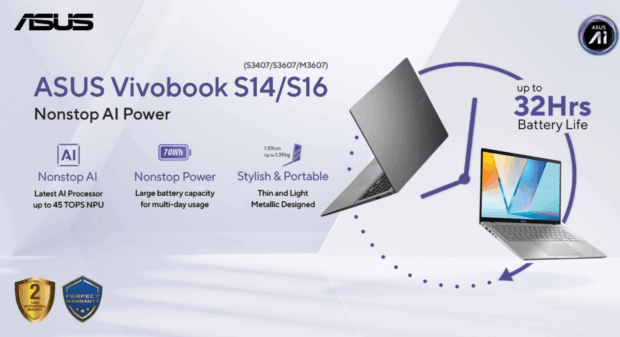
Console Wars: A Detailed Comparison of the Latest Gaming Consoles in the Market
In the dynamic world of video games, the perennial “console wars” have been a hotly debated topic among enthusiasts and gamers alike. With each new generation of consoles, technology takes a giant leap forward, bringing cutting-edge features to enhance the gaming experience. In this post, we’ll delve deep into the latest gaming consoles available in the market, analyzing their strengths and weaknesses in various categories. We’ll also explore how they stack up against each other in key areas such as performance, exclusivity, ecosystem, and value for money.
Performance and Graphics
Performance is a critical factor in determining the success of a gaming console. The latest consoles boast powerful hardware that promises stunning graphics, faster load times, and a more immersive gaming experience. The PlayStation 5 and Xbox Series X are at the forefront of this battle, both equipped with custom AMD processors and advanced graphics capabilities.
The PlayStation 5 (PS5) utilizes a custom RDNA 2 architecture, offering up to 10.28 teraflops of graphical performance. This allows for real-time ray tracing, a feature that enhances the realism of lighting and shadows in games. On the other hand, the Xbox Series X packs a punch with its own RDNA 2 architecture, delivering up to 12 teraflops of power. This slight edge gives Xbox Series X a minor advantage in raw graphical prowess.
However, performance isn’t just about raw power. Both consoles leverage SSD technology for storage, drastically reducing load times. The PS5’s custom SSD is slightly faster, which some claim results in quicker load times and smoother gameplay transitions. In contrast, the Xbox Series X compensates with its Quick Resume feature, allowing players to switch between multiple games seamlessly.

Exclusive Games
Exclusive games often sway consumers’ decisions when choosing a console. Sony’s PlayStation has historically been strong in this department, with franchises like Uncharted, The Last of Us, and God of War drawing players in. The PS5 continues this tradition with titles such as Demon’s Souls and Ratchet & Clank: Rift Apart.
In contrast, Microsoft’s Xbox Series X is strengthening its lineup of exclusives. Acquisitions of game studios such as Bethesda have bolstered its offerings, with anticipated titles like Starfield and the next Fable game expected to attract attention. Additionally, Xbox Game Pass, a subscription service offering access to a massive library of games, provides a compelling value proposition.
Ecosystem and Services
The broader ecosystem of a console can significantly impact the user experience. Sony’s PlayStation Network (PSN) and Microsoft’s Xbox Live are the backbone of their respective online services. Both offer robust multiplayer experiences, cloud saves, and monthly free games for subscribers.
The PS5’s PlayStation Plus subscription service offers a rotating selection of free games and exclusive discounts. Additionally, the PlayStation Now service allows players to stream or download a wide range of titles from PS4, PS3, and PS2 eras, enhancing the console’s appeal with backward compatibility.
Meanwhile, Xbox Game Pass is often touted as a “Netflix for games,” offering a vast collection of games for a monthly fee. This service is available on Xbox consoles and PCs, providing a seamless gaming experience across platforms. Microsoft’s focus on cross-platform play and cloud gaming through xCloud further expands its ecosystem, making it an attractive choice for those who value flexibility.

Design and User Experience
Design and user experience are subjective, yet crucial aspects of a gaming console. Sony’s PS5 sports a bold, futuristic design, which has been polarizing among fans. Its towering frame and distinctive white-and-black color scheme make it stand out, though its size can be challenging for some entertainment centers.
In contrast, the Xbox Series X adopts a minimalist, monolithic design. Its compact and straightforward form factor is practical and fits easily into most setups. Both consoles offer user-friendly interfaces, though the PS5’s UI has been praised for its snappy performance and intuitive layout.
Value for Money
Ultimately, the battle of the consoles often boils down to value for money. The PS5 and Xbox Series X are similarly priced, yet each offers unique features that cater to different audiences. The PS5’s exclusive games and slightly faster SSD make it appealing to those who prioritize a premium gaming experience.
On the other hand, the Xbox Series X, with its powerful hardware and Game Pass service, presents a cost-effective solution for gamers who want access to a diverse library of games without breaking the bank. Microsoft’s focus on backward compatibility and cross-platform gaming further enhances its value proposition.
The Nintendo Factor
No discussion on gaming consoles would be complete without mentioning Nintendo. The Nintendo Switch, though not a direct competitor in terms of raw power, has carved out its niche with its hybrid design and family-friendly games. Titles like The Legend of Zelda: Breath of the Wild and Animal Crossing: New Horizons have been massive hits, proving that innovation and unique gameplay can rival technical specifications.

The Switch’s portability and versatility offer a different kind of gaming experience, attracting a broad demographic of gamers. Its success showcases that there is room in the market for diverse types of consoles, each catering to different gaming preferences.
Takeaways
The console wars continue to be an exciting saga, with each brand bringing something unique to the table. The PS5 and Xbox Series X represent the pinnacle of current-gen console gaming, while the Nintendo Switch offers a refreshing alternative. Choosing the right console depends on individual preferences, such as game exclusivity, ecosystem, and overall value.
Whether you’re drawn to the PS5’s exclusive titles, the Xbox Series X’s Game Pass, or the Switch’s innovative design, there’s no shortage of options to explore. For more insights into the world of gaming consoles, check out this detailed showdown between the PS5 and Xbox Series X.
In the end, the choice of console is a personal one, influenced by gaming habits, budget, and brand loyalty. The latest generation of consoles promises a bright future for gaming, pushing the boundaries of what’s possible and delivering unforgettable experiences to players worldwide.
Emerging Trends and Future Prospects
As we look towards the future of gaming consoles, several trends and innovations are poised to shape the industry. One of the most significant trends is the integration of virtual reality (VR) and augmented reality (AR) technologies. Sony, with its PlayStation VR, has already made strides in this area, offering immersive virtual reality experiences that complement its PS5 offerings.
Meanwhile, Microsoft is exploring the potential of VR and AR through partnerships and technological advancements. The potential for these technologies to enhance gameplay through more immersive storytelling and interactive environments is vast, and we can expect to see more developments in this space in the coming years.

Cloud Gaming and Streaming
Cloud gaming is another area of rapid development. Services like Microsoft’s xCloud and Sony’s PlayStation Now are paving the way for a future where games can be streamed directly from the cloud, reducing the need for powerful hardware. This shift could democratize gaming, making high-quality experiences more accessible to a wider audience.
Google Stadia and NVIDIA GeForce Now are also major players in the cloud gaming arena, demonstrating the growing interest and investment in this technology. As internet infrastructure improves globally, the potential for cloud gaming to revolutionize the way we access and play games becomes increasingly feasible.
Cross-Platform Play and Community Building
The demand for cross-platform play is rising, driven by the gaming community’s desire for a more unified experience. Games like Fortnite and Call of Duty: Warzone have demonstrated the benefits of allowing players on different consoles and platforms to compete and collaborate seamlessly.
This trend towards cross-platform play not only enhances the social aspect of gaming but also expands the potential player base for multiplayer games. As game developers continue to embrace this trend, we can expect cross-platform compatibility to become a standard feature in future releases.
Environmental Considerations
As awareness of environmental issues grows, consumers and companies alike are placing a greater emphasis on sustainability. Gaming companies are beginning to consider the environmental impact of their products, from the materials used in manufacturing to the energy consumption of their consoles.

Sony has committed to reducing the carbon footprint of its PlayStation consoles, aiming for carbon neutrality in the coming decades. Similarly, Microsoft has announced plans to make Xbox products carbon negative by 2030. These initiatives reflect a broader shift within the industry towards sustainable practices, aligning with the increasing consumer demand for environmentally friendly products.
The Role of Indie Games
Indie games have become an integral part of the gaming ecosystem, offering unique and innovative experiences that often diverge from mainstream titles. Platforms like Nintendo’s eShop, PlayStation Store, and Xbox’s indie program have provided indie developers with the opportunity to reach larger audiences.
These games often experiment with new mechanics, art styles, and narratives that challenge traditional gaming conventions. As a result, indie games have gained a dedicated following and contributed to the diversification of gaming content available on all major consoles.
Conclusion: The Ever-Evolving Landscape
The landscape of gaming consoles is ever-evolving, driven by technological advancements, consumer preferences, and industry trends. As the console wars continue, each brand is pushing the boundaries of what’s possible, striving to deliver the best experiences for gamers worldwide.
Whether you’re a fan of PlayStation’s exclusive games, Xbox’s comprehensive ecosystem, or Nintendo’s innovative approach, there’s no denying the excitement that each new generation of consoles brings. The future of gaming consoles promises not only enhanced performance and graphics but also a more connected, immersive, and sustainable gaming experience.
For a deeper dive into the current state of the gaming industry, visit this comprehensive analysis of the latest trends and innovations shaping the gaming world. As we witness these developments unfold, one thing is certain: the world of gaming consoles is as thrilling and dynamic as ever.



